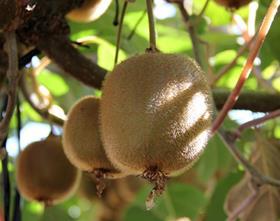
Southern Hemisphere fruit has made exciting gains in South Korea as free trade agreements and detox diets conspire to drive up consumer demand for imports.
Lemons and limes, grapefruit, kiwifruit, mangoes and mangosteen imports in particular saw significant volume growth in 2015 compared to the prior year, according to official data.
Korean Customs and Trade Development Institute statistics compiled by Fresh Intelligence Analysis show major increases for Chilean kiwifruit (up 98 per cent year-on-year), Chilean lemons and limes (up 50 per cent) South African grapefruit (39 per cent).
Meanwhile, the market opened up to Peruvian mangoes in 2015, which contributed to a 23.7 per cent rise in total imported mango volumes compared to the prior year.
Overall kiwifruit imports (from New Zealand and Chile) rose 22 per cent in 2015 to 23,822 tonnes, the statistics show. Combined grapefruit volumes grew by 28 per cent to 25,010 tonnes (imports from key supplier the US increased by 29 per cent to 14,116 tonnes). And lemon and lime arrivals were up 31 per cent at 17,793 tonnes, of which 12,962 tonnes came from the US.
Leading importers and retailers agree that these categories have increased their market share in South Korea. Many attribute growth to recent free trade and import agreements, which have opened up more choice to consumers. A drive to stay healthy, as well as availability of certain fruits has also affected demand for imported produce.
“Imported fruits, like grapefruit and mango, are getting more popular,” says Edward Kim, Costco Wholesale Korea, general merchandise manager. “This is because of the impact of free trade agreements and consumer demand for new and exciting produce.
“Bad weather and health issues also always have a big impact on this market. Especially last year and this year also, El Nino had affected quality and prices, and as a consequence, consumers needed alternative high-end products. For example high-brix oranges were a hot seller last year and its share, I believe, will increase as time goes by.”
Grapefruit has taken off on back of a lemon shortage last year, explains Chang Hwa Oh of leading importer Jinwon Trading, who cites lemons, grapefruit and cherries as the three big import items in Korea for market performance.
“Lemons had been used a lot in drinks for their health benefits and a detox craze. But then became too expensive so people turned to grapefruit,” he says.
Grapefruit mixed with Korean spirit Soju is also being marketed by drinks suppliers as a hangover cure, he adds.
Some of the key recent market access developments in South Korea have been the opening of the market to Peruvian mangoes and a protocol for Chilean cherries that does not require methyl bromide.
The latter development opens the way for Chile to seafreight cherries to Korea during the winter months - a period when Korea has not traditionally consumed many cherries (Tasmania and New Zealand export small but growing volumes by air). There is a sense that if Chile can seafreight fruit at much lower prices it might help to lift winter consumption.
“The future for Chilean cherries is bright since it is mostly seafreighted at a low cost,” says Kim. “Regarding Peruvian mangoes, it is competitive in terms of pricing especially against Australian Mangoes. Last year in Korea just one agency tried to import them, and this year the market will be expanding considerably as consumer response was quite good.”



